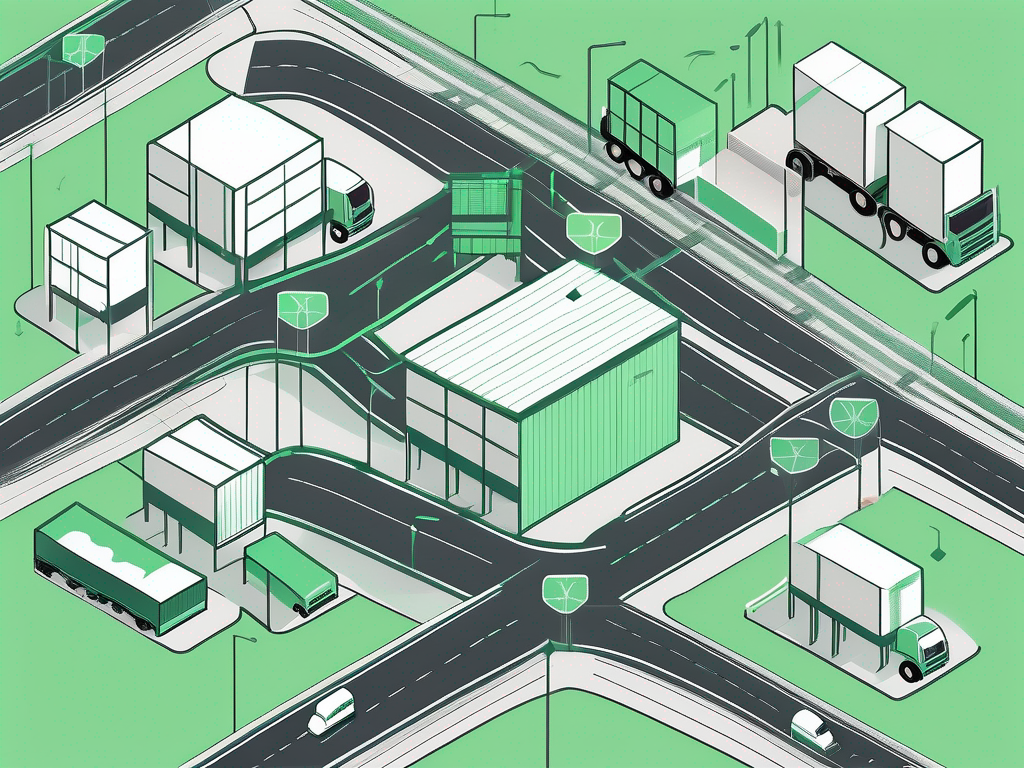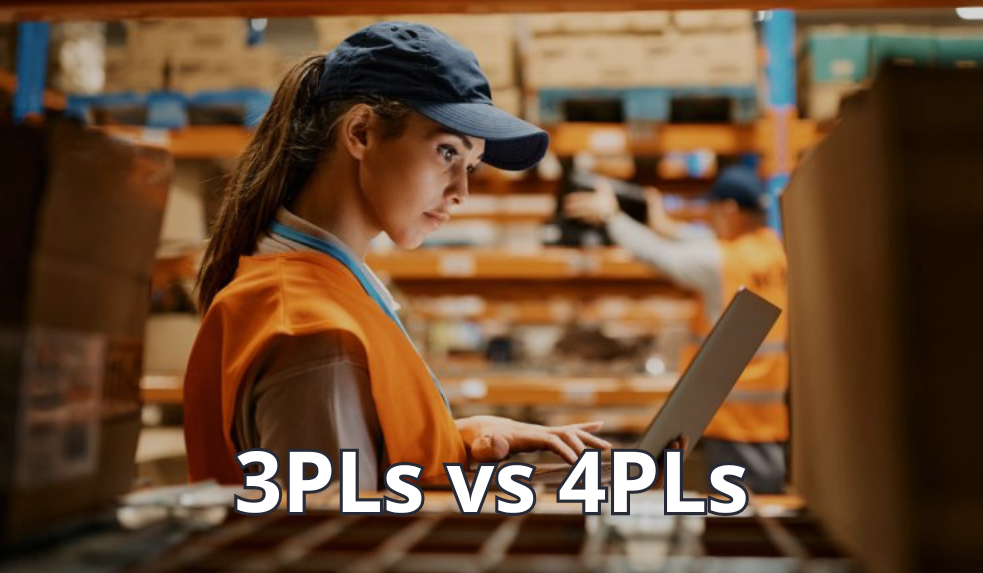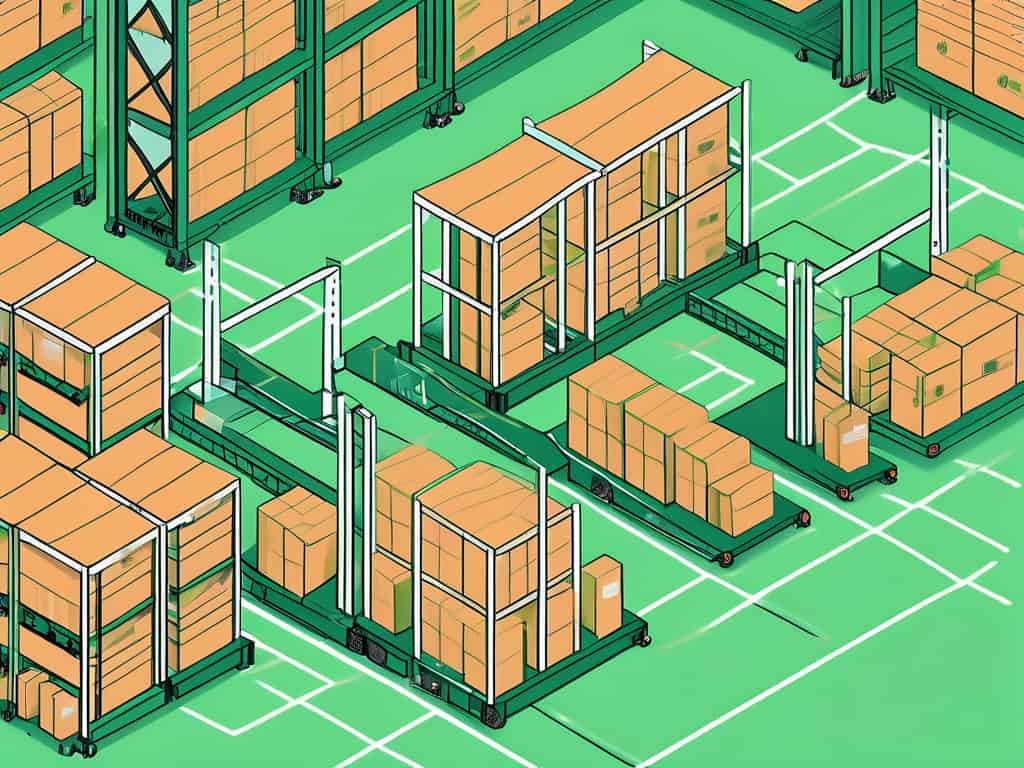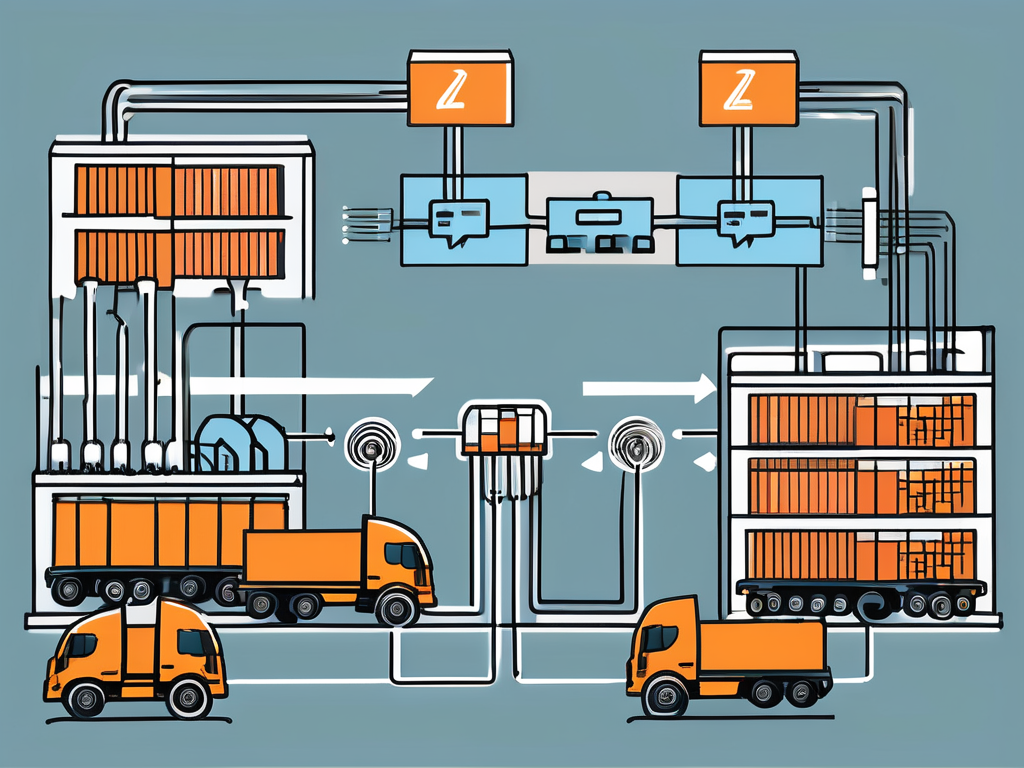Share this
Why 3PL and 4PL Experiences are So Different
by Shipfusion Team on Oct. 2, 2024

The logistics industry offers various solutions that facilitate effective supply chain management, among which are third-party logistics (3PL) and fourth-party logistics (4PL). While these two models serve similar purposes, their operations and experiences differ significantly. This article aims to clarify why 3PL and 4PL options exist, how they’re unique, and help businesses better understand which option suits their specific needs.
What Is a 3PL?
Third-party logistics, or 3PL, refers to services that allow businesses to outsource logistics and supply chain management. This model typically includes transportation, warehousing, and distribution. Companies using 3PL providers leverage their expertise and resources to segment specific functions of their supply chain. Doing so allows them to focus on core business activities while leaving logistics to an expert.
3PL providers often have a robust network of warehouses and transport facilities. They can reduce costs and improve efficiency by utilizing economies of scale. Businesses can choose to outsource their entire logistics operation or just particular segments, like fulfillment or transportation, based on their operational requirements.
Common services offered by 3PLs include:
- Inventory management
- Package tracking
- Ecommerce order fulfillment
- Transportation management
In addition to the basic services, many 3PL providers offer specialized solutions tailored to specific industries, such as cold chain logistics for perishable goods or ecommerce fulfillment services that cater to online retailers. This specialization allows businesses to benefit from tailored strategies that meet their unique needs, ensuring that products are handled and delivered in the most effective manner possible.
Advanced technology, including warehouse management systems (WMS) and transportation management systems (TMS), further enhance visibility and control over the supply chain, enabling real-time tracking and data analysis.
As consumer expectations for fast and reliable delivery continue to grow, businesses are increasingly turning to 3PL providers to meet these demands efficiently. By utilizing a 3PL, companies can tap into a provider's established logistics network – which often includes multiple shipping options and distribution centers – to not only improve customer satisfaction but also enhance competitiveness in a rapidly evolving marketplace.
What Is a 4PL?
Fourth-Party Logistics (4PL), on the other hand, is a higher-level logistics management solution that typically integrates not just a single provider's services but multiple third-party functions into a cohesive operation. 4PL providers act as a single point of contact and oversee the entire supply chain, optimizing resources and enhancing operational efficiency.
A 4PL solution often combines the possibilities of technology, strategic planning, and management of multiple logistics providers. As such, it embraces a more encompassing approach to overseeing supply chains. The role of a 4PL can extend to include training, consultancy, and strategic decision-making.
Key features of 4PLs include:
- Comprehensive supply chain management
- Vendor management
- Real-time data access and analytics
- Integration with client’s IT system
This model benefits companies looking for a seamless logistics experience, which can lead to more effective forecasting and more strategic decisions based on integrated data analysis.
4PLs are particularly valuable in today's fast-paced business environment, where agility and adaptability are paramount. By leveraging advanced technologies such as artificial intelligence and machine learning, 4PL providers can predict market trends and consumer behaviors, allowing businesses to stay ahead of the curve. This proactive approach not only enhances operational efficiency but also reduces costs associated with inventory management and transportation.
Additionally, the collaborative nature of 4PL services fosters stronger relationships among various stakeholders in the supply chain. By acting as an intermediary, 4PLs facilitate communication and coordination between manufacturers, suppliers, and distributors, ensuring that everyone is aligned with the overall business objectives. This level of integration can lead to improved service levels, faster response times, and ultimately, greater customer satisfaction.
Why 3PL and 4PL Solutions Should Be Evaluated Separately
Evaluating 3PL and 4PL solutions separately is essential because their offerings, capabilities, and costs vary significantly. Companies must identify their specific logistical needs to make the right choice. 3PLs focus on operational efficiency and specific tasks, while 4PLs emphasize broader management and strategic alignment.
The differentiation becomes clear when considering the scale of operations. For a small to medium-sized business with straightforward logistics needs, a 3PL solution may provide sufficient support without overextending resources. In contrast, companies engaged in complex supply chains requiring coordination of multiple providers will benefit from the extensive oversight a 4PL offers.
Moreover, the cost structure differs between the two models. 3PLs often operate on a pay-per-service basis, allowing businesses to control costs based on utilization. Conversely, 4PLs may require a more significant upfront investment due to their comprehensive management role.
Additionally, the technological capabilities of 3PLs and 4PLs can also differ markedly. Many 3PL providers have invested in advanced warehouse management systems and transportation management software to enhance operational efficiency. However, 4PLs typically leverage these technologies not just for their own operations but also to integrate and optimize the entire supply chain, providing real-time visibility and analytics across all logistics partners. This holistic approach can lead to improved decision-making and responsiveness in a fast-paced market environment.
Furthermore, the relationship dynamics with each type of provider can shape a company’s logistics strategy. A 3PL often functions as a tactical partner, executing specific tasks such as warehousing, transportation, or order fulfillment. In contrast, a 4PL acts as a strategic partner, aligning logistics with broader business objectives and fostering collaboration among various stakeholders. This distinction can significantly influence how a company approaches its supply chain challenges, particularly in terms of flexibility, scalability, and innovation.
How Do 3PLs and 4PLs Compare?
When comparing 3PLs and 4PLs, several key factors emerge that highlight their differences.
Here’s an overview of how these two models stand up against one another:
- Scope of services: 3PLs offer targeted logistics solutions, while 4PLs provide comprehensive supply chain oversight.
- Operational control: Companies collaborating with 3PLs maintain direct control over logistics operations, whereas in a 4PL relationship, the provider assumes more responsibility.
- Technology integration: 4PLs generally offer higher technological alignment, integrating IT systems and data analytics to optimize supply chain efficiency.
- Partnership model: 3PLs often work as a service provider, while 4PLs act as strategic partners, focusing on long-term goals and outcomes.
Businesses should assess their current logistics operations and future growth plans when determining which service model would better support ongoing development. Additionally, understanding the nuances of each model can significantly impact operational efficiency. For instance, 3PLs may excel in specific areas such as transportation or warehousing, allowing companies to leverage their expertise in those domains. This can lead to cost savings and improved service levels, especially for businesses that require flexibility in their logistics operations.
On the other hand, the holistic approach of 4PLs can be particularly beneficial for companies that are looking to streamline their entire supply chain. By consolidating various logistics functions under one umbrella, 4PLs can provide a more cohesive strategy that aligns with a company's overall business objectives. This can be especially advantageous in industries characterized by rapid changes in demand or complex regulatory environments, where agility and adaptability are paramount. Moreover, the strategic insights offered by 4PLs can help businesses identify inefficiencies and opportunities for innovation, ultimately leading to a more resilient supply chain.
Is a 3PL or 4PL Better for Your Ecommerce Business?
When it comes to selecting between a 3PL or a 4PL for an ecommerce business, the decision largely hinges on the complexity of the supply chain, budget constraints, and long-term goals. For small businesses, 3PL might serve as a cost-effective solution allowing rapid scalability as their logistics needs grow.
Conversely, larger ecommerce enterprises with diverse product lines and intricate supply chains might find value in a 4PL’s strategic approach. This model would enable them to streamline operations and improve coordination among various supply chain components.
Moreover, the integration of technology is a critical consideration. Businesses that require advanced analytics and real-time data to make informed decisions will benefit from the services of a 4PL. In situations where logistics are straightforward, and there is less variability, a 3PL could be sufficient.
Understanding the differences between 3PL and 4PL is imperative for ecommerce businesses seeking to optimize their logistics strategies. Evaluating each option in terms of operational needs, technological requirements, and long-term objectives can lead to effective decision-making that positions the business for success.
Why 3PL and 4PL Providers Can't Beat Shipfusion
If you’re in search of an all-in-one solution to fulfillment, look no further than Shipfusion. We’re the best 3PL in North America for growing ecommerce businesses in a wide range of industries. Benefit from ongoing support from a dedicated Account Manager plus real-time reporting via order management software that our team built from the ground up. With a 99.9% order accuracy rate, there’s no better service provider to trust with your fulfillment operations. Contact us to receive a custom quote today.
Share this
You May Also Like
These Related Articles

3PL vs. 4PL: Which Is the Right Solution For Your Business?

3PL vs. Freight Forwarder: What's the Difference?

2PL vs 3PL: Which Is Better for DTC Ecommerce?
- April 2025 (18)
- March 2025 (26)
- February 2025 (26)
- January 2025 (37)
- December 2024 (16)
- November 2024 (23)
- October 2024 (22)
- September 2024 (27)
- August 2024 (9)
- July 2024 (8)
- June 2024 (5)
- May 2024 (8)
- April 2024 (8)
- March 2024 (6)
- February 2024 (6)
- January 2024 (5)
- December 2023 (3)
- November 2023 (3)
- October 2023 (5)
- September 2023 (4)
- August 2023 (2)
- July 2023 (1)
- June 2023 (4)
- March 2023 (2)
- October 2022 (1)
- September 2022 (5)
- August 2022 (4)
- July 2022 (7)
- June 2022 (4)
- May 2022 (4)
- April 2022 (6)
- March 2022 (2)
- February 2022 (1)
- January 2022 (3)
- December 2021 (2)
- November 2021 (4)
- October 2021 (2)
- September 2021 (5)
- August 2021 (4)
- July 2021 (4)
- June 2021 (3)
- May 2021 (2)
- April 2021 (3)
- March 2021 (3)
- February 2021 (3)
- January 2021 (2)
- December 2020 (4)
- November 2020 (2)
- October 2020 (4)
- September 2020 (2)
- July 2020 (5)
- June 2020 (4)
- May 2020 (2)
- April 2020 (2)
- March 2020 (4)
- February 2020 (1)
- December 2019 (1)
- May 2018 (1)
- March 2018 (2)
- February 2018 (3)
- January 2018 (3)
- November 2017 (3)
- July 2017 (4)
- March 2017 (3)
- February 2017 (5)
- January 2017 (3)
- December 2016 (4)
- November 2016 (6)
- October 2016 (6)
- October 2015 (1)
- September 2015 (1)
- June 2015 (3)
- May 2015 (3)
- August 2014 (1)
- July 2014 (1)
- March 2014 (1)
- February 2014 (1)